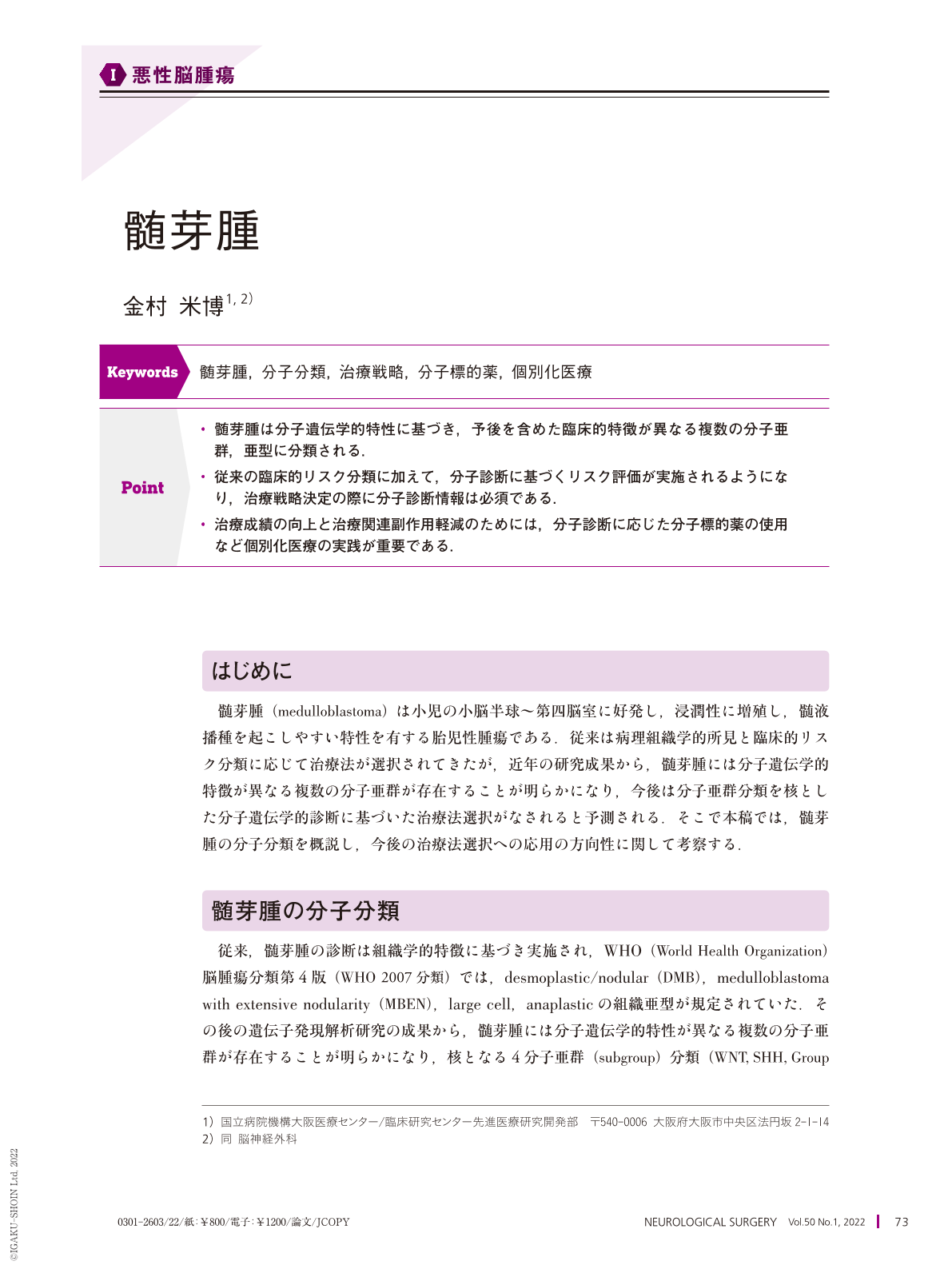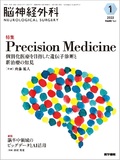Japanese
English
- 有料閲覧
- Abstract 文献概要
- 1ページ目 Look Inside
- 参考文献 Reference
Point
・髄芽腫は分子遺伝学的特性に基づき,予後を含めた臨床的特徴が異なる複数の分子亜群,亜型に分類される.
・従来の臨床的リスク分類に加えて,分子診断に基づくリスク評価が実施されるようになり,治療戦略決定の際に分子診断情報は必須である.
・治療成績の向上と治療関連副作用軽減のためには,分子診断に応じた分子標的薬の使用など個別化医療の実践が重要である.
Current treatment protocols for medulloblastomas(MBs)stratify patients into high and average risk groups according to their age, metastatic status, and residual tumor volume after resection. Recent genetic and molecular biological reserach revealed that MBs are classified into at least four core subgroups — WNT, SHH, Group 3, and Group 4 — based on differences in their cytogenetics, mutational spectra, and gene expression signatures, as well as in their clinical phenotypes and prognosis. Latest studies suggest more distinct subtypes of MBs by DNA methylation profiles. In addition to conventional clinical risk stratification, new molecular risk stratification using molecular subgroups/subtypes, cytogenetic features and copy number aberrations help understand the outcome of current standard and/or experimental therapies. To achieve further improvement in prognosis and reduce treatment-related adverse events, the efficiency and safety of low-dose craniospinal irradiation and novel molecular targeted drugs, including SMO inhibitors, cyclin-dependent kinases 4/6, or checkpoint kinase 1/2 inhibitors, have been examined with respect to the molecular properties of each tumor. The molecular information of each MB is indispensable for precision medicine of MBs, strongly promoting the development of advanced therapeutic strategies of MBs.

Copyright © 2022, Igaku-Shoin Ltd. All rights reserved.


